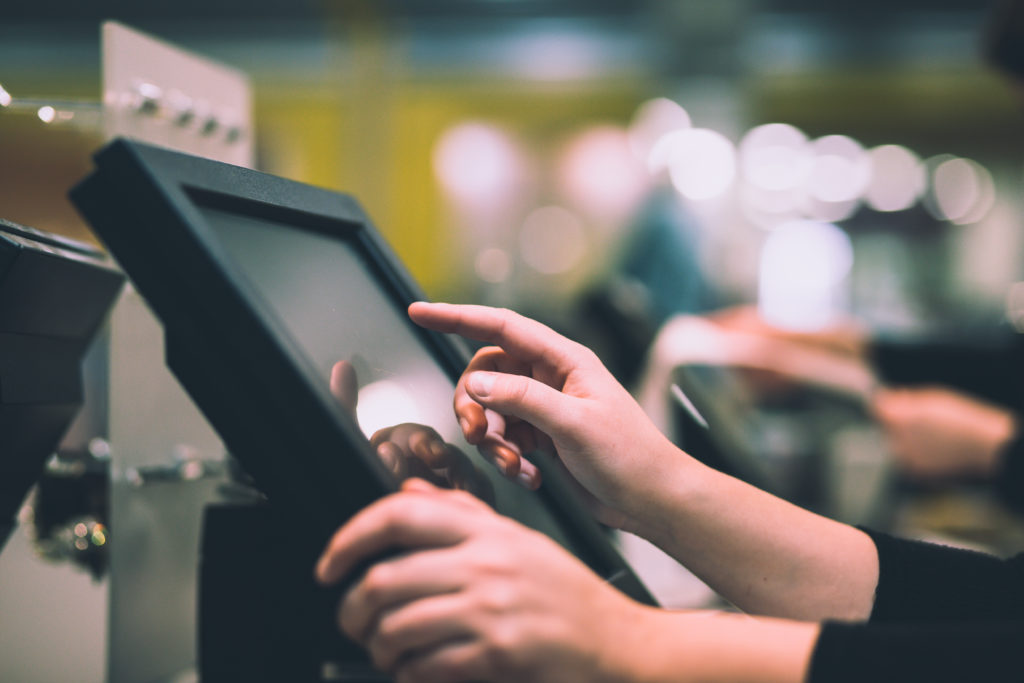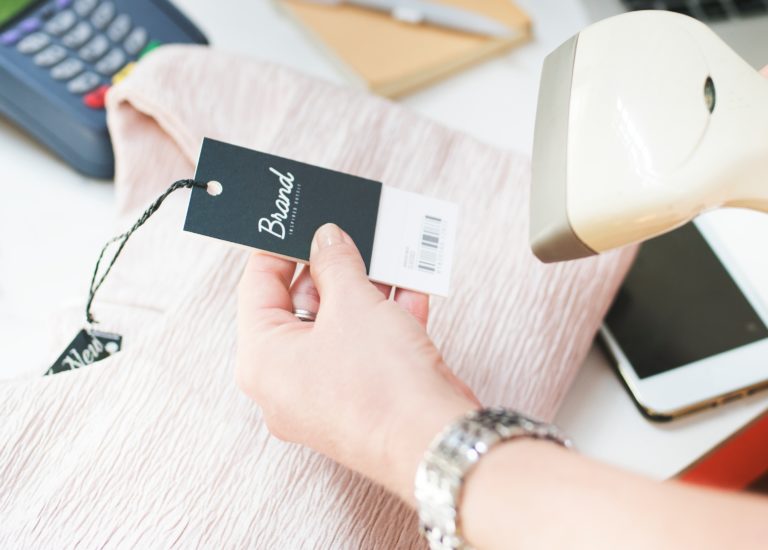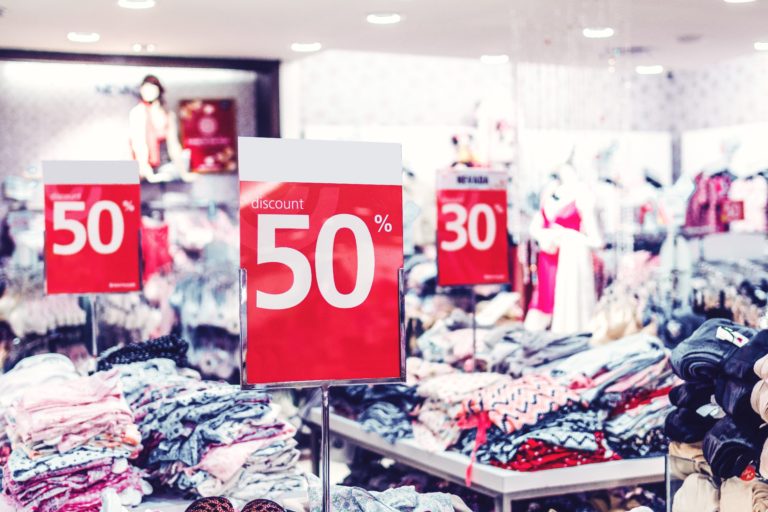This content is restricted to site members. If you are an existing user, please log in. New users may register below.

It can be downright confusing when you’re comparing POS (Point of Sale) systems. With so many modern POS software on the market, how do you know which one to choose? And most importantly, how do you know which of Australia’s best POS systems will work for your brand, now and in the future?
Leveraging 17 years of experience in helping businesses grow and overcome challenges, Qdos has put together this list of 30 essential POS features to help you compare systems and decide what your business needs.
Data is king when it comes to competing in the current retail climate, so if you’re not already, it’s time to run your business in the cloud. This means that all data you view in your retail POS system, such as reports, customer information, stock availability, will be ‘real-time’.
The types of reports available at store level should include total sales, backfill reports, and daily budgets so you can make timely, informed decisions.
One of the most critical requirements is to choose a Point of Sale system that can be tailored to your unique business needs.
The future of retail is all about innovation, and retailers must continuously employ new strategies to stay engaged with their customers. The features your business needs today are sure to be different from what you’ll need in 2, 5 or even 10 years from now.
Rather than an ‘out of the box’ solution, where ‘what you see is what you get’, invest in a POS system that has the ability to deliver on all your requirements well into the future. This way, you can add features as your business grows.
This includes a choice on visibility and authorisation levels. For example, what data should store associates be able to access?
Chain stores may have no restrictions on product and pricing visibility (that is, the same information is available across all stores). But it makes sense for franchisees to want access to only their own store’s products, price list, and store-specific reports.
Similarly, your internal security rules can restrict staff access to certain tasks. For example, you may decide that only store managers are authorised to give customer discounts and refunds, or that PINs should be used to complete certain tasks. You need a retail POS solution that will match your rules and processes.
Rather than a stand-alone POS system, it is imperative for POS to be fully integrated with a feature-rich back-end ERP (enterprise resource planning) system.
While a POS provides store-level features, store associates would also have access to the full gamut of back-office functions available through the ERP, to help boost sales. This includes replenishment, access to real-time reports, including sales and inventory related activity.
When done well, this means store staff can see that an out of stock product is on order and replenishments are due to arrive next week. They can take the customer’s details into the CRM, put the product aside when it arrives, and call to say it’s ready to collect. This keeps the customer happy and captures the sale for your business.
It also arms head office and management teams with the technology and business intelligence to strengthen customer retention and acquisition, to make your brand thrive.
ERP integration includes a quick release of new products into stores, advanced customer relationship management (CRM), customer segmentation, and electronic direct mail (EDM) campaigns, pricing strategies, promotions and loyalty programs.
Some cloud POS systems only allow you to transact in online mode so that if you happen to lose Internet connection you cannot trade. Imagine if it happened during a major promotion or a peak period like Christmas trading? While rare, the cost of lost sales due to a 3-hour Internet outage could be enormous.
Having a retail POS solution with offline capabilities is crucial, so you can continue to make sales, and then when your Internet connection resumes, those sales will be synchronised to the back-end inventory ERP.
You need a POS system that sales assistants can learn very quickly. The look and feel should be simple and intuitive. This will make the transition to the POS system as smooth as possible. Plus, it’ll reduce staff frustrations and keep training requirements to a minimum.
The Qdos POS is a touch-screen, which means it’s easy to navigate and all the functions are on-screen and intuitive. What’s more, retail staff don’t need to use a mouse and keyboard, which saves counter space and keeps the area neat.
Quick select buttons are highly beneficial to have on the main POS screen so that certain products can be selected instantly during a transaction. Types of products you may like to include are popular selling products or products without barcodes. You need the flexibility to set up the categories and their products exactly how you want them, including colour codes of choice.
Better still, a multi-store retail POS system should give flexibility for businesses, such as franchises, to set up the quick select buttons differently in each store if required, while at the same time allowing head office to maintain some control and uniformity across the stores.
This is a really cool feature that essentially allows you to ‘park’ one or more sales transactions mid-way. Particularly useful when customers want to keep perusing the store. Once a sales transaction is on hold, you can process a new transaction, and then retrieve the ‘parked’ transaction to finish it off. It helps to keep the checkout experience as frictionless as possible.
This feature is imperative for industries such as apparel and footwear, where product variants are best managed in a ‘style colour size’ grid format.
Let’s take a pair of shoes as an example – the fashion matrix presents the colours and sizes for the shoe style on one screen. Sales assistants view colour and size availability, and other information that is specific to the selected style. They choose the required colour and size from the grid to add the product to the sales transaction.

Another type of product sold by retailers is a product bundle, where several products are sold as one combined product – such as a ‘lipstick, foundation and concealer’ gift pack, where the customer can choose from a range of colour options. Retail POS should manage the sale of product bundles at the desired price point – in which case it will decrement inventory levels for each item in the bundle as a result of the sale.
A massive time-saver for stores – a barcode scanner is attached to the POS machine to scan product barcodes. The POS software system recognises the product and price and adds it to the sales transaction. It speeds up the sales process, especially in stores with large product ranges and high-volume sales.
Barcode scanners are also hugely beneficial to scan customer receipts for sales returns, credit notes, laybys, gift cards, loyalty cards, and to complete stocktakes, store transfers and receive shipments.
If your business is heavily reliant on barcodes, then make sure barcode labels can be printed directly from the POS. This helps your retail staff quickly solve the problem of lost swing tags.

In the current retail landscape, consumers expect immediate answers to their questions and seek instant gratification. Store associates must be equipped with the tools to access product information easily and quickly. Through manual product search, store associates can view product descriptions and images, and advanced search lets you search for products based on more complex criteria – category, product code, and vendor to name a few.
It’s common for customers to request a product in-store, only to find that it’s sold out, or not available in the desired colour or size. It speaks volumes when sales associates can direct customers to other stores that have exactly what they’re after. To give customers a great shopping experience and build brand loyalty, the POS software system should give accurate figures on product availability in-store, and in all other stores and online sales channels. For an extra customer service touch, retail staff can offer to call the other store to put stock aside while the customer is in transit between stores.
Albeit, franchise networks may prefer franchisees to have access to their own store inventory levels only – an advanced inventory management POS system will cater for all options.
Why not go a step further – customers love it when sales assistants can arrange transfer of an item from another store just for them. It shows you’re going the extra mile to make sure they get that must-have dress or pair of shoes. Also, you may need to transfer excess stock to or from other stores or warehouses. Your POS system needs to have the capability to manage stock transfers.
To manage customer expectations, store associates must have access to replenishment reports in POS. Backfill reports show what has been sold for the day and give accurate details on how to restock the shelves to meet customer demand.
As part of the retail management software solution, store associates (or head office personnel) should be able to create automated replenishment orders for suppliers, based on store-specific data such as ‘previous sales history’, ‘minimum product quantity levels’, and ‘best sellers’. To illustrate using a shoe retailer, a ‘leopard print pointy heel in sizes 37, 38 and 39’ may have been a best seller at Store A but not Store B, therefore you would certainly replenish in Store A, but obviously less (or none) required for Store B.
Sometimes product inventory levels may need to be adjusted on the fly. For example, POS shows that you have 5 birthday mugs in stock but you only have 3 in the store. Inventory stocktakes should be easy to complete in the POS system so your stock levels remain accurate.
Your retail management solution should provide the flexibility to complete a variety of stocktakes including full, partial, and category-based stocktakes.
The best POS systems equip store associates with easy access to customer information in a detailed CRM. This means the ability to create customer records that include:
This helps store associates to personalise the in-store experience for customers.

These days it’s glaringly obvious if a retailer doesn’t offer a loyalty program, and an enticing one at that. The fact is, customers have come to expect loyalty offers, and without them, your sales process can lead to attrition.
Careful thought should go into planning your rewards program. Loyalty Programs can be kept simple (such as a ‘spend and earn’ points program) or try offering a tiered rewards program which gives additional benefits to high-value VIP customers.
A key consideration is that rewards should be given for all purchases made – not only in-store but also online. This means you need an integrated business management system. Also, be clear on your terms and conditions such as whether points will be issued for gift card purchases, and whether rewards have an expiry timeframe.
An effective POS system needs to support your unique loyalty program requirements. This includes on-boarding members to the program, customer enquiries related to loyalty points balance, and redeeming loyalty points (such as via loyalty vouchers).
The many benefits of gift cards include increased revenue and enhanced customer loyalty. The POS system should allow you to easily sell gift cards and link cards to customer records – even if the card is lost the details can be easily retrieved. Consumers also want the convenience of using gift cards that were bought from your website for in-store purchases.
When a customer presents a gift card and is not sure if it is still valid, or even what the current amount is on the card, you should be able to perform a quick-lookup in the retail POS software to answer their questions. You should also be able to apply multiple gift cards to the same payment transaction.
Promotions and discounts help to increase sales, attract new customers, and retain current customers. Retailers typically run promotions for special occasions such as Valentine’s Day, Christmas, and end of season sales.
The best POS systems can manage a broad range of promotion types, from simple ones such as ‘10% discount store-wide’, through to more complex promotions such as ‘buy 1 item and get 10% off the second item’, or ‘spend $20 to get a 10% discount on sales total’, or ‘buy 3 and get the 4th item for free’.
The POS should provide authorised sales associates the flexibility to apply discounts in various ways – whether that’s a dollar or percentage value, to select which products in the transaction to discount, allow price overrides, or cancel discounts if required.

For stores that receive planned and unplanned inventory shipments directly from suppliers, your POS system needs the capability to manage both of these scenarios. For planned shipments, look up the purchase order number and receive the stock.
Alternatively, purchase orders can be created on the fly for unplanned shipments. Once shipments are processed, POS inventory levels are increased and staff can start selling these products in-store right away.
An advanced cloud POS system gives the ability to issue customer quotes for desired products. Store associates can issue a quote receipt, and once the buyer is ready to proceed, the sales assistant simply scans the barcoded receipt to retrieve the transaction details. With the click of a button, the POS will convert the quote to a customer order where more products can be added if desired, or payment can be processed.
The POS backorder feature allows consumers to place an order for stock that is yet to arrive. Once stock has been delivered in-store, store associates can use point of sale CRM features to notify the customer their items are now available for collection.
The ‘on account’ feature gives the flexibility for in-store sales to your wholesale customers. The sales order is created in POS with the default payment terms such as ‘7, 14, 30 days’ being associated to the customer.
Wholesale orders can be retrieved in POS or in the back-end retail ERP for payment processing.
This important feature means that you can process a customer order and payment in-store, and flag the order for delivery. This feature is useful for retailers and brands with large bulky items such as furniture or BBQ’s. Warehouse personnel access the order and arrange delivery of the purchased goods to the customer.
This feature allows back-office sales associates to input orders over the phone in the ERP software solution, and the order can then be retrieved from the integrated Point of Sale once the customer arrives in-store. If required, sales assistants can edit the order before finalising it.
When a sales transaction is entered into the POS and paid using EFTPOS, the EFTPOS integration ensures that the sales amount does not need to be entered again. The sales amount flows through to the EFTPOS machine for easy processing. This avoids double-handling, and most importantly, avoids keyed errors that charge the customer incorrectly and make your till totals unbalanced.
A crucial POS feature that reduces the transaction processing time and supports contactless payments and tap and go, which have become the norm in Australia.
The POS should allow you to process customer laybys. Either look up an existing customer or add a new customer, and link the customer to the transaction. The POS should prompt store associates with the initial deposit required, should track all layby payments made along the way, and provide the capability to cancel laybys.
Consumers want the convenience to pay however they choose. Rather than paying for the goods by cash only, or by credit card, they may want to pay using split tender – a combination of cash and card, or cash and gift voucher, or card and credit note. POS needs to accommodate for these split payment options.
Retailers like the ability to tailor POS receipts with relevant information. Make sure you can include your business logo, and various tailored messages for standard receipts, credit notes, laybys, vouchers, and refunds. There should be flexibility to add lengthy messages with no restrictions. This all helps to ensure a satisfying shopping experience.
Implementing an Australian POS software solution is something that should not be underestimated. There will be times when staff need support, and having the ability to pick up the phone and speak to a local support team is crucial for your business success.
While there are so many more features of modern, cloud-based POS systems, the ones covered in this article are the most critical features. Retailers should invest in a comprehensive POS solution that can meet the demands of your business well into the future – it will hold you in good stead for the ever-changing pace of the retail industry.
We believe that Qdos cloud POS is Australia’s best retail POS system, because it includes all these features and many more. Qdos is built for the modern retail landscape and helps retailers and franchises thrive. The Qdos integrated suite of products also includes ERP – CRM, Order and Inventory, Accounting – eCommerce, Warehouse and Distribution.
Get in touch or call 03 8644 4080 to find out how Qdos software can transform your business.